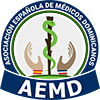To study the prevalence of male obesity-secondary hypogonadism (MOSH) in patients with moderate to severe obesity, we performed a prospective prevalence study including 100 male patients with moderate to severe obesity at a university tertiary hospital. Total testosterone (TT) and sex hormone-binding globulin (SHBG) concentrations among others were assayed in all patients. Serum-free testosterone (FT) concentration was calculated from TT and SHBG levels. Semen analysis was conducted in 31 patients. We found a prevalence of 45% (95% CI: 35-55%) when considering decreased TT and/or FT concentrations. Serum concentrations of TT were correlated negatively with glucose (r = -0.328, p < 0.001) and insulin resistance (r = -0.261, p = 0.011). The same occurred with FT and glucose (r = -0.340, p < 0.001) and insulin resistance (r = -0.246, p = 0.016). Sixty-two percent (95% CI: 39-85%) of the patients with seminogram also presented abnormal results in semen analysis. The frequencies of low TT or low FT values were similar in patients with abnormal or normal semen analysis (p = 0.646 and p = 0.346, respectively). Ejaculate volume inversely correlated with BMI (ρ = -0.400, p = 0.029) and with excess body weight (ρ = -0.464, p = 0.010). Our data show the prevalence of MOSH in patients with moderate to severe obesity is high. Low circulating testosterone is associated with insulin resistance and low ejaculate volume with higher BMI and excess body weight. Semen analysis must be performed in these patients when considering fertility whether or not presenting low circulating testosterone.

